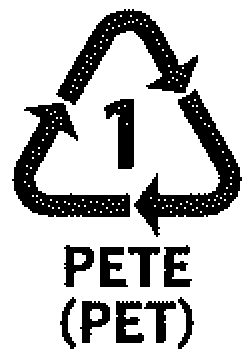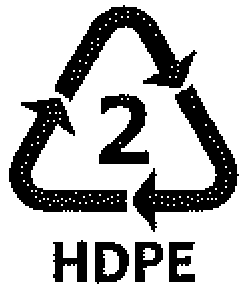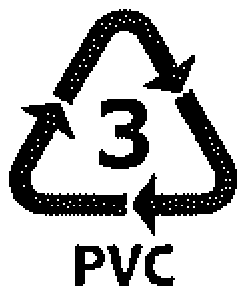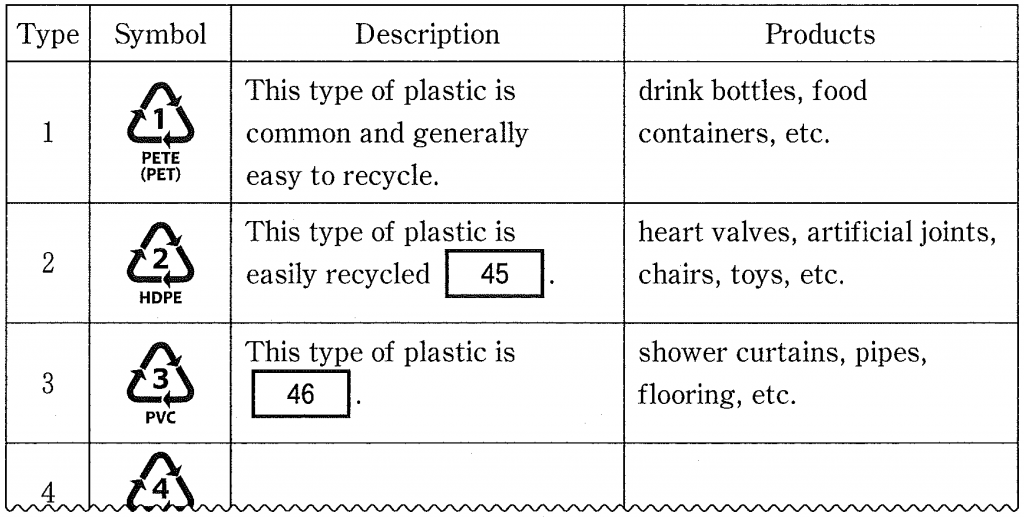【共通テスト過去問】英語(リーディング)2022本試【本文と和訳・正解】
正解と日本語訳
第6問A
問1 正解 3
問2 正解 3
問3 正解 1
問4 正解 6,3
A あなたの研究グループは「時刻が人々にどのように影響するか」について学んでいる。あなたは共有したい記事を見つけた。次の会議の要約メモを完成させなさい。
あなたにとって一日はいつ始まりますか
「あなたは朝型の人ですか。」と尋ねられたとき,「いいえ,私は夜更かしです。」と答える人もいます。そのような人々は夜に集中して創造することができます。時計の反対側では,有名なことわざは「早起きの鳥は虫を捕まえる(早起きは三文の徳)」と断言しています。それは,朝早く働くことが食べ物を手に入れ,賞を獲得し,目標を達成する方法であることを意味します。ヒバリは朝の歌手なので,早起きの鳥は,フクロウの反対で,ヒバリです。日中に活動する生き物は「昼行性」であり,夜に出現する生き物は「夜行性」です。
さらに別のことわざは,「早く寝て早く起きることは,人を健康に,裕福に,賢くする。」と述べます。ヒバリはベッドから飛び出して大きな朝食で朝を大歓迎し,一方でフクロウはスヌーズボタンを押して,通常は朝食なしで,土壇場で準備をします。彼らはよりわずかにしか食事をしないかもしれませんが,彼らは一日の終わりに食べます。食後に運動しないと体重の増加を引き起こすことがあります。おそらくヒバリはより健康的です。フクロウは,ヒバリのスケジュールで働くか,学ばなければなりません。ほとんどの学校教育は午後4時より前に行われるので,若いヒバリは特定の課題をより上手に行うでしょう。一日の早い時間の商売の取引は一部のヒバリをより裕福にするかもしれません。
何がある人をヒバリにし,他の人をフクロウにするのでしょうか。ある理論は,昼夜の好みは生まれた時刻と関係があることを示唆します。2010年,クリーブランド州立大学の研究者は,人の体内時計が生まれた瞬間に始まるだけでなく,夜に生まれた人々は日中の間,生涯にわたって課題を抱えている可能性があるという証拠を発見しました。通常,彼らの世界体験は暗闇で始まります。従来の学習時間と事務作業は日光の下で行われるため,私達は一日は朝に始まると想定しています。眠っている人々は列の一番前におらず,機会を逃すかもしれません。
誰もが朝に一日を始めるシステムに従っているのでしょうか。約6千年続く宗教集団であるユダヤ人は,一日は日没から次の日没まで,つまりイブからイブまでで計られると信じています。キリスト教徒はクリスマス・イブでこの伝統を続けています。中国人は,年を示すだけでなく,一日を2時間の期間ごとに分けるために,12匹の動物のシステムを使います。最初の期間であるネズミの時間は午後11時から午前1時までです。中国の文化もまた夜に一日を始めます。言い換えれば,古代の習慣はフクロウが時間を見る方法を支持しているのです。
調査は,フクロウはより賢く,より創造的であることを示唆しています。そのため,おそらくヒバリは必ずしもより賢いわけではありません。つまり,ヒバリは「健康」とときどき「裕福」を勝ち取りますが,彼らは「賢さ」を失うかもしれません。初期の報告で,リチャード・D・ロバーツとパトリック・C・キロネンは,フクロウはより知性が高い傾向があると述べています。その後,ロバーツが共著者の一人であった,フランジス・プレッケルによる包括的な研究も同じ結論に達しました。しかし,それはフクロウにとって完全に良い知らせというわけではありません。学業が困難になり得るだけでなく,彼らは日中の仕事の機会を逃すかもしれず,ヒバリが眠っている間に夜に遊ぶ「ナイトライフ」の悪い習慣を楽しむ可能性が高くなります。ナイトライフは高価になる傾向があります。バルセロナ大学の研究は,ヒバリは正確で,完璧を求め,ストレスをほとんど感じないことを示唆します。フクロウは新しい冒険や楽しい余暇活動を求めますが,それでもくつろぐのに苦労することがよくあります。
人々は変わることができるでしょうか。結果がすべてではありませんが,若者についての研究はノーと言っているようであり,私たちは変化しにくいようです。そのため,若者が成長し,より多くの自由を獲得するにつれて,彼らは最終的にヒバリやフクロウの性質に戻ります。しかし,この分類がすべての人に当てはまるとは限らないという懸念が生じます。生まれた時刻はおそらく一つの指標である上に,ネイチャーコミュニケーションズに発表された報告は,DNAが時間に関する私たちの習慣にも影響を与える可能性があることを示唆しています。他の研究は,加齢や病気のために一部の人々に起こる変化に焦点を当てています。この分野の新しい研究は常に現れています。ロシアの大学生の研究は,6つの種類があるので,フクロウとヒバリだけが周りにいる唯一の鳥ではないかもしれないことを示唆しています。
要約メモ:
あなたにとって一日はいつ始まりますか。
語彙
昼行性の定義: 39
⇔反対:夜行性
主なポイント
・私たち全員が一般的な日中のスケジュールに簡単に適合するわけではないが,特に私たちが子供であるときは,それに従うことを強いられる。
・いくつかの研究は,私たち一人一人にとって最も活動的な時間は私たちの生まれつきの性質の一部であることを示す。
・基本的に, 40 。
・新しい研究によって,見方は変わり続けている。
興味深い点
・ 41 ために,この記事では,ユダヤ教とキリスト教,それでだけはなく中国の時間の区分が言及されている。
・いくつかの研究は 42 は人の体内時計を設定する可能性があり,知性と 43 との違いの説明になる可能性があることを示す。
問1 39 に当てはまる最も適当な選択肢を選べ。
① 目標を素早く達成する
② ペットの鳥を飼うのが好きである
③ 日中に活発である
④ 食べ物を探すのが上手である
問2 40 に当てはまる最も適当な選択肢を選べ。
① より柔軟な時間とパフォーマンスのスケジュールが将来発達する
② 私たちが歳を取るにつれて,朝の社会活動を楽しむことがより重要になる
③ 私たちが一日の何時に最高のパフォーマンスを発揮するかを変えることは困難かもしれない
④ フクロウのスケジュールで生活することは,最終的に,社会的,経済的利益につながる
問3 41 に当てはまる最も適当な選択肢を選べ。
① ある社会は一日が夜に始まると長い間信じてきたと説明する
② 夜行性の人々は過去により宗教的であったことを示す
③ 人々は朝の怠惰のせいで機会を逃すと長い間考えてきたと言う
④ フクロウはヒバリのスケジュールで仕事や学校に行かなければならないという考えを支持する
問4 42 と 43 に当てはまる最も適当な選択肢を選べ。
① 睡眠の量
② 外見
③ 行動
④ 文化的背景
⑤ 宗教的信念
⑥ 生まれた時刻
第6問B
問1 正解 2
問2 正解 2,1
問3 正解 3,4
B あなたは,「環境を守るために私たちが知っておくべきこと」をテーマにした科学発表コンテストのポスターを準備している学生グループに所属してる。あなたはポスターを作成するために次の文章を使用している。
プラスチックのリサイクル
—私達が知っておくべきこと—
世界はさまざまな種類のプラスチックでいっぱいです。周りを見回すと,あなたは何十ものプラスチックの品物を見るでしょう。よく見ると,あなたはそれらのリサイクルの記号に気づくでしょう。日本では,あなたは下の図1の最初の記号を見たことがあるかもしれませんが,アメリカとヨーロッパでは,より詳細な分類があります。これらのリサイクル記号は,追いかける矢印の三角形,または1から7までの数字が中にある単純な三角形のように見えます。このシステムは,1988年にアメリカのプラスチック工業協会によって始められましたが,2008年から国際標準化機構であるASTMインターナショナル(米国試験材料協会)によって管理されています。リサイクル記号は,使用されるプラスチックの化学組成とそのリサイクル可能性に関する重要なデータを提供します。しかし,物体のプラスチックリサイクル記号はつねにその品物がリサイクル可能であることを意味するわけではありません。それは,それがどの種類のプラスチックで作られているか,そしてそれがリサイクル可能であるかもしれないことを示しているだけです。
図1.プラスチックのリサイクル記号(図は省略)
それならば,これらの数字は何を意味するのでしょうか。一つのグループ(番号2,4,および5)は人体にとって安全であると見なされますが,残りのグループ(番号1,3,6,および7)は特定の環境で問題になることがあります。まず,より安全なグループを見てみましょう。
高密度ポリエチレンはリサイクルタイプ2のプラスチックであり,一般にHDPEと呼ばれます。それは無毒であり,心臓弁や人工関節のために人体で使用することができます。それは丈夫で-40℃もの低音と100℃もの高温で使用できます。HDPEは害を及ぼすことなく再利用でき,またビール瓶のケース,ミルクポット,椅子,おもちゃにも適しています。タイプ2の製品は複数回リサイクルできます。タイプ4の製品は,低密度ポリエチレン(LDPE)でできています。それらは安全に使用でき,柔軟性があります。LDPEは,絞り出し可能なボトルやパンの包装に使用されます。現在,リサイクルされているタイプ4のプラスチックは非常にわずかしかありません。タイプ5の素材であるポリプロピレン(PP)は,世界で2番目に広く生産されているプラスチックです。それは軽くて伸縮性がなく,衝撃,熱,寒さに強い抵抗を持ちます。それは家具,食品容器,オーストラリアドルなどのポリマー紙幣に適しています。タイプ5のわずか3%だけがリサイクルされています。
次に,2番目のグループであるタイプ1,3,6,および7を見てみましょう。これらは,それらが含む化学物質またはそれらをリサイクルすることが難しいため,より困難です。リサイクルタイプ1のプラスチックは一般にPETE(ポリエチレンテレフタレート)として知られており,主に食品や飲料の容器に使用されています。PETE容器は日本ではよくPETと書かれており,完全に洗浄するのが難しいため,一度だけ使用すべきです。また,一部の容器を柔らかくし,形を変える可能性があるので,それらは70℃以上に加熱すべきではありません。汚染されていないPETEはリサイクルが容易で,新しい容器や衣服,またはカーペットにすることができますが,PETEがポリ塩化ビニル(PVC)で汚染されていると,それはPETEをリサイクルできなくすることがあります。PVC,タイプ3は,最もリサイクル可能でないプラスチックとして知られているものの1つと考えられています。それは専門家によってのみ処分されるべきであり,決して家や庭で火をつけてはいけません。タイプ3のプラスチックは,シャワーカーテンやパイプ,フローリングに見られます。タイプ6,ポリスチレン(PS)または発泡スチロールとよく呼ばれるものは,リサイクルが難しく,発火しやすいです。しかし,製造が安価で軽量です。それは使い捨ての飲料のコップや即席めんの容器,その他の食品包装に使用されます。タイプ7のプラスチック(アクリル,ナイロン,ポリカーボネート)はリサイクルが困難です。タイプ7のプラスチックは,シートやダッシュボード,バンパーなどの車両部品の製造によく使用されます。
現在,プラスチックの約20%しかリサイクルされておらず,約55%が最終的に埋め立てられています。したがって,さまざまな種類のプラスチックに関する知識は,廃棄物を削減するのに役立ち,環境へのますます高まる意識に貢献するでしょう。
あなたのプレゼンテーションポスターの草稿:
あなたはプラスチックのリサイクル記号を知っていますか。
プラスチックのリサイクル記号とは何か。
44
プラスチックの種類とリサイクル情報
| タイプ | 記号 | 説明 | 製品 |
| 1 |  |
この種類のプラスチックは一般的なものであり通常はリサイクルが容易である。 | 飲料のボトル,食品の容器など |
| 2 |  |
この種類のプラスチックは簡単にリサイクルでき, 45 。 | 心臓弁,人工関節,椅子,おもちゃなど |
| 3 |  |
この種類のプラスチックは 46 。 | シャワーカーテン,パイプ,フローリングなど |
共通の特性を持つプラスチック
47
48
問1 最初のポスターの見出しの下に,あなたのグループは,文章で説明されているように,プラスチックのリサイクル記号を紹介したいと考えている。次のうちどれが最も適切であるか。 44
① それらはプラスチックのリサイクル可能性とその他の関連する問題を順位付ける記号です
② それらはプラスチックの化学物質構成とリサイクルの選択肢についての情報を提供します
③ それらは一般的な仕様のためにどの標準化団体がそれらに証明書を発行したかを使用者に伝えます
④ それらはASTMによって導入され,プラスチック工業協会によって開発されました
問2 あなたはタイプ2とタイプ3のプラスチックの説明を書くように頼まれた。 45 と 46 に当てはまる最も適当な選択肢を選べ。
タイプ2 45
① また一般的に使い捨てプラスチックとして知られている
② また幅広い温度で使用される
③ しかし人体に有害である
④ しかし飲料の容器には適さない
タイプ3 46
① リサイクルが難しく,庭で燃やすべきではない
② 可燃性。しかし,それは柔らかくて安価に生産できる
③ 無毒な製品として知られている
④ リサイクルしやすいことでよく知られている
問3 あなたは共通の特性を共有するいくつかのプラスチックについて主張を書いている。記事によると,次のうち2つの適切なものはどれか。(順番は関係しない。) 47 ・ 48
① 沸騰水(100℃)は,タイプ1およびタイプ6のプラスチック容器で扱うことができる。
② タイプ1,2,3のロゴがある製品はリサイクルが容易である。
③ 記号1,2,4,5,6の製品は食品や飲料の容器に適している。
④ タイプ5,タイプ6の印のある製品は軽量である。
⑤ タイプ4および5のプラスチックは耐熱性があり,広くリサイクルされている。
⑥ タイプ6と7のプラスチックは,リサイクルが容易で環境に優しい。
問題文
第6問A
A Your study group is learning about “how time of day affects people.” You have found an article you want to share. Complete the summary notes for your next meeting.
When Does the Day Begin for You?
When asked “Are you a morning person?” some reply “No, I’m a night owl.” Such people can concentrate and create at night. At the other end of the clock, a well-known proverb claims: “The early bird catches the worm,” which means that waking early is the way to get food, win prizes, and reach goals. The lark is a morning singer, so early birds, the opposite of owls, are larks. Creatures active during the day are “diurnal” and those emerging at night are “nocturnal.”
Yet another proverb states: “Early to bed, early to rise makes a man healthy, wealthy, and wise.” Larks may jump out of bed and welcome the morning with a big breakfast, while owls hit the snooze button, getting ready at the last minute, usually without breakfast. They may have fewer meals, but they eat late in the day. Not exercising after meals can cause weight gain. Perhaps larks are healthier. Owls must work or learn on the lark schedule. Most schooling occurs before 4:00 p.m., so young larks may perform certain tasks better. Business deals made early in the day may make some larks wealthier.
What makes one person a lark and another an owl? One theory suggests preference for day or night has to do with time of birth. In 2010, Cleveland State University researchers found evidence that not only does a person’s internal clock start at the moment of birth, but that those born at night might have lifelong challenges performing during daytime hours. Usually, their world experience begins with darkness. Since traditional study time and office work happen in daylight, we assume that day begins in the morning. People asleep are not first in line, and might miss chances.
Does everyone follow the system of beginning days in the morning? The Jewish people, an approximately 6,000-year-old religious group, believe a day is measured from sundown until the following sundown—from eve to eve. Christians continue this tradition with Christmas Eve. The Chinese use their system of 12 animals not only to mark years, but to separate each two-hour period of the day. The hour of the rat, the first period, is from 11:00 p.m. to 1:00 a.m. Chinese culture also begins the day at night. In other words, ancient customs support how owls view time.
Research indicates owls are smarter and more creative. So, perhaps larks are not always wiser! That is to say, larks win “healthy” and sometimes “wealthy,” but they may lose “wise.” In an early report, Richard D. Roberts and Patrick C. Kyllonen state that owls tend to be more intelligent. A later, comprehensive study by Franzis Preckel, for which Roberts was one of the co-authors, came to the same conclusion. It is not all good news for owls, though. Not only can schoolwork be a challenge, but they may miss daytime career opportunities and are more likely to enjoy the bad habits of “nightlife,” playing at night while larks sleep. Nightlife tends to be expensive. A University of Barcelona study suggests larks are precise, seek perfection, and feel little stress. Owls seek new adventures and exciting leisure activities, yet they often have trouble relaxing.
Can people change? While the results are not all in, studies of young adults seem to say no, we are hard-wired. So, as young people grow and acquire more freedom, they end up returning to their lark or owl nature. However, concerns arise that this categorization may not fit everyone. In addition to time of birth possibly being an indication, a report published in Nature Communications suggests that DNA may also affect our habits concerning time. Other works focus on changes occurring in some people due to aging or illness. New research in this area appears all the time. A study of university students in Russia suggests that there are six types, so owls and larks may not be the only birds around!
Your summary notes:
When Does the Day Begin for You?
Vocabulary
Definition of diurnal: 39
⇔ opposite: nocturnal
The Main Points
・ Not all of us fit easily into the common daytime schedule, but we are forced to follow it, especially when we are children.
・ Some studies indicate that the most active time for each of us is part of our nature.
・Basically, 40 .
・Perspectives keep changing with new research.
Interesting Details
・ The Jewish and Christian religions, as well as Chinese time division, are referred to in the article in order to 41 .
・ Some studies show that 42 may set a person’s internal clock and may be the explanation for differences in intelligence and 43 .
問1 Choose the best option for 39 .
① achieves goals quickly
② likes keeping pet birds
③ lively in the daytime
④ skillful in finding food
問2 Choose the best option for 40 .
① a more flexible time and performance schedule will be developed in the future
② enjoying social activities in the morning becomes more important as we age
③ it might be hard for us to change what time of day we perform best
④ living on the owl schedule will eventually lead to social and financial benefits
問3 Choose the best option for 41 .
① explain that certain societies have long believed that a day begins at night
② indicate that nocturnal people were more religious in the past
③ say that people have long thought they miss chances due to morning laziness
④ support the idea that owls must go to work or school on the lark schedule
問4 Choose the best options for 42 and 43 .
① amount of sleep
② appearance
③ behavior
④ cultural background
⑤ religious beliefs
⑥ time of birth
第6問B
B You are in a student group preparing a poster for a scientific presentation contest with the theme “What we should know in order to protect the environment.” You have been using the following passage to create the poster.
Recycling Plastic
—What You Need to Know—
The world is full of various types of plastic. Look around, and you will see dozens of plastic items. Look closer and you will notice a recycling symbol on them. In Japan, you might have seen the first symbol in Figure 1 below, but the United States and Europe have a more detailed classification. These recycling symbols look like a triangle of chasing pointers, or sometimes a simple triangle with a number from one to seven inside. This system was started in 1988 by the Society of the Plastics Industry in the US, but since 2008 it has been administered by an international standards organization, ASTM(American Society for Testing and Materials) International. Recycling symbols provide important data about the chemical composition of plastic used and its recyclability. However, a plastic recycling symbol on an object does not always mean that the item can be recycled. It only shows what type of plastic it is made from and that it might be recyclable.
Figure 1. Plastic recycling symbols

So, what do these numbers mean? One group (numbers 2, 4, and 5) is considered to be safe for the human body, while the other group (numbers 1, 3, 6, and 7) could be problematic in certain circumstances. Let us look at the safer group first.
High-density Polyethylene is a recycle-type 2 plastic and is commonly called HDPE. It is non-toxic and can be used in the human body for heart valves and artificial joints. It is strong and can be used at temperatures as low as -40°C and as high as 100°C. HDPE can be reused without any harm and is also suitable for beer-bottle cases, milk jugs, chairs, and toys. Type 2 products can be recycled several times. Type 4 products are made from Low-density Polyethylene (LDPE). They are safe to use and are flexible. LDPE is used for squeezable bottles, and bread wrapping. Currently, very little Type 4 plastic is recycled. Polypropylene (PP), a Type 5 material, is the second-most widely produced plastic in the world. It is light, non-stretching, and has a high resistance to impact, heat, and freezing. It is suitable for furniture, food containers, and polymer banknotes such as the Australian dollar. Only 3% of Type 5 is recycled.
Now let us look at the second group, Types 1, 3, 6, and 7. These are more challenging because of the chemicals they contain or the difficulty in recycling them. Recycle-type 1 plastic is commonly known as PETE (Polyethylene Terephthalate), and is used mainly in food and beverage containers. PETE containers — or PET as it is often written in Japan — should only be used once as they are difficult to clean thoroughly. Also, they should not be heated above 70°C as this can cause some containers to soften and change shape. Uncontaminated PETE is easy to recycle and can be made into new containers, clothes, or carpets, but if PETE is contaminated with Polyvinyl Chloride (PVC), it can make it unrecyclable. PVC, Type 3, is thought to be one of the least recyclable plastics known. It should only be disposed of by professionals and never set fire to at home or in the garden. Type 3 plastic is found in shower curtains, pipes, and flooring. Type 6, Polystyrene (PS) or Styrofoam as it is often called, is hard to recycle and catches fire easily. However, it is cheap to produce and lightweight. It is used for disposable drinking cups, instant noodle containers, and other food packaging. Type 7 plastics (acrylics, nylons, and polycarbonates) are difficult to recycle. Type 7 plastics are often used in the manufacture of vehicle parts such as seats, dashboards, and bumpers.
Currently, only about 20% of plastic is recycled, and approximately 55% ends up in a landfill. Therefore, knowledge about different types of plastic could help reduce waste and contribute to an increased awareness of the environment.
Your presentation poster draft:
Do you know the plastic recycling symbols?
What are plastic recycling symbols?
44
Types of plastic and recycling information

Plastics with common properties
47
48
問1 Under the first poster heading, your group wants to introduce the plastic recycling symbols as explained in the passage. Which of the following is the most appropriate? 44
① They are symbols that rank the recyclability of plastics and other related problems.
② They provide information on the chemical make-up and recycling options of the plastic.
③ They tell the user which standards organization gave them certificates for general use.
④ They were introduced by ASTM and developed by the Society of the Plastics Industry.
問2 You have been asked to write descriptions of Type 2 and Type 3 plastics. Choose the best options for 45 and 46 .
Type 2 45
① and commonly known as a single-use plastic
② and used at a wide range of temperatures
③ but harmful to humans
④ but unsuitable for drink containers
Type 3 46
① difficult to recycle and should not be burned in the yard
② flammable; however, it is soft and cheap to produce
③ known to be a non-toxic product
④ well known for being easily recyclable
問3 You are making statements about some plastics which share common properties. According to the article, which two of the following are appropriate? (The order does not matter.) 47 ・ 48
① Boiling water (100°C) can be served in Type 1 and Type 6 plastic containers.
② It is easy to recycle products with Type 1, 2, and 3 logos.
③ Products with the symbols 1, 2, 4, 5, and 6 are suitable for food or drink containers.
④ Products with Type 5 and Type 6 markings are light in weight.
⑤ Type 4 and 5 plastics are heat resistant and are widely recycled.
⑥ Type 6 and 7 plastics are easy to recycle and environmentally friendly.
日本語訳についてはオープンソースとし,教育現場において許諾なしに自由に印字・配布できるものとする。
SNSでシェア